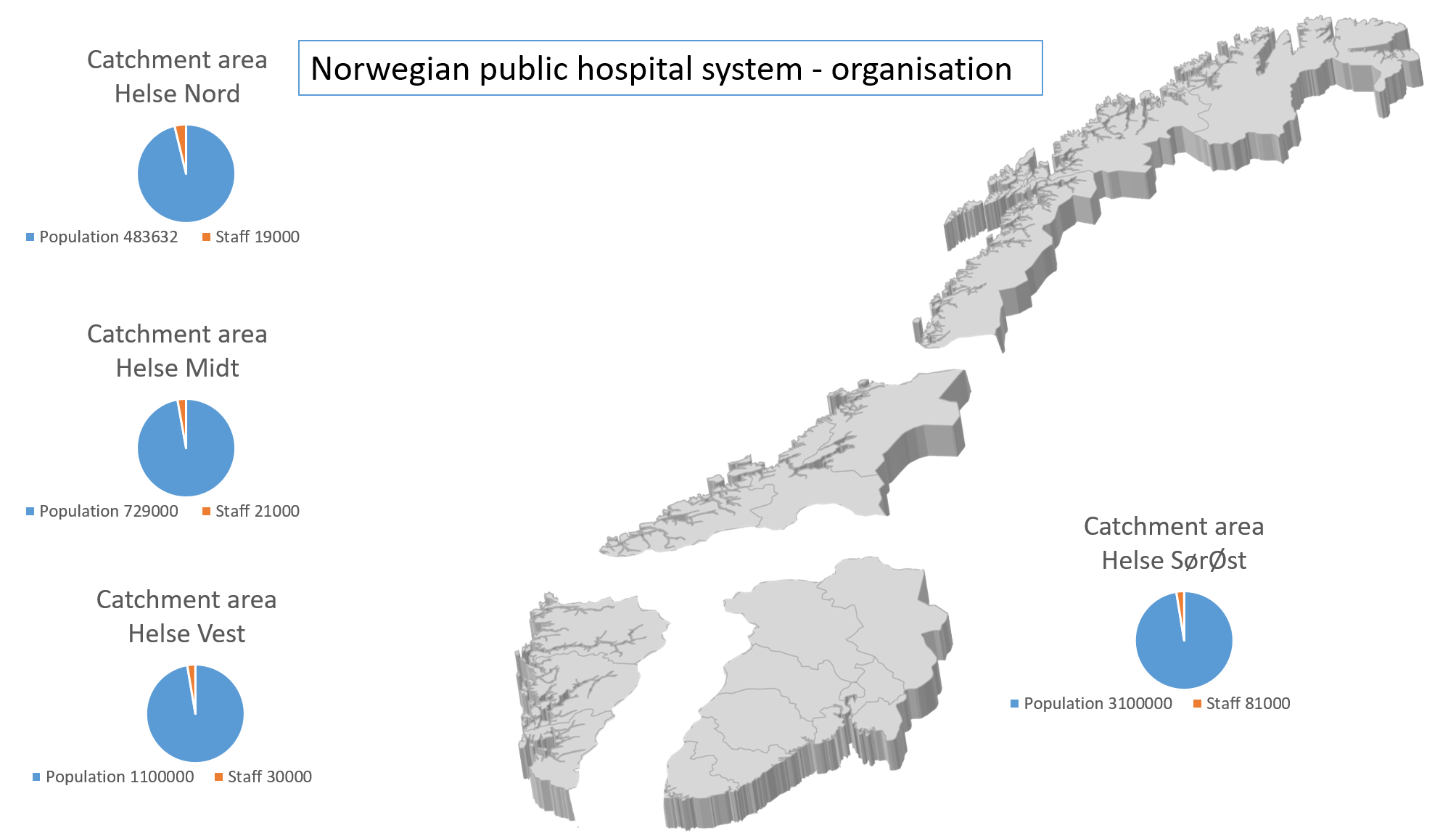
Establishing a government-mandated national collaborative network for simulation-based learning in Norwegian hospitals: Opportunities and Responsibilities
Simulation-based learning is recognized as an important educational method for health professionals as well as for students in learning new tasks, competence enhancement, and lifelong learning. However, the health trusts in Norway have different levels of maturity regarding simulation-based learning, and the level of implementation is varying between and within the hospitals and the health trusts. This variation helps in fostering a wealth of ideas, but it can have the challenge that good ideas spread slower than one would think. It can also lead to inconsistencies in the messages delivered to learners in the different centers. This in turn can mean that in clinical practice there might be misunderstandings or even conflicts about “who is right”. Therefore, the coordination of activities has a potential impact on safety.
The Norwegian hospital system is organized into four regional health trusts. The health trusts are named after the geographical location as Figure 1 illustrates.
Figure1. The Norwegian public hospital system is divided into four regional health trusts named Helse Nord, Helse Midt, Helse SørØst, and Helse Vest.
Based on the diversity in the maturity of simulation activities in the Norwegian hospital system, the Ministry of Health and Care Services decided that the regions should collaborate in developing and quality- assure simulation-based learning activities. The regional health trusts dedicated economic funding for the collaborative network, initially for two years. Hence, InterRegSim was established in January 2022.
The mandate for InterRegSim collaborative network is as follows:
- Competence enhancement: Contribute to the development and recommendations of simulation-based learning activities, and increased use of these in the health trusts.
- Professional development: Standardise educational programs for simulationists working with simulation-based learning activities and support national and international research.
- Sharing: Share evidence-based and quality-assured simulation-based learning tools in a digital platform.
- Evaluation: Work for systematic registration and evaluation of simulation-based learning activities in the health trusts.
Opportunities
Following the mandate, the collaborative network will ensure that simulation-based activities are performed with similar and good quality, which is crucial for healthcare professionals’ competence, well-being, and patient safety. Besides, InterRegSim will also lead to reduced cost expenses in the Norwegian public hospital system, because simulationists develop and share their knowledge and tools for education.
Responsibilities
InterRegSim collaborative network needs to perform well to continue receiving economic funding from the Authorities. During the first two years, simulationists from different health trusts have to contribute to the workforce to develop standards for simulation-based activities and educational tools. Besides, stakeholders such as leaders, simulationists, and clinicians need to be aware of the collaborative network and take advantage of their products and recommendations.
Conclusion
InterRegSim aims to be an established part of the Norwegian hospital system with dedicated funding for the future. InterRegSim will reduce educational inequalities since students and health professionals will receive simulation training with equally good quality. From a long-term perspective, InterRegSim will contribute to better healthcare services.
Link to the InterRegSim web page: www.interregsim.no
Written by Une Elisabeth Stømer, Peter Dieckmann, Thor Ole Gulsrud, Camilla Normand, Nina Vatland, from the University of Stavanger (Norway)




